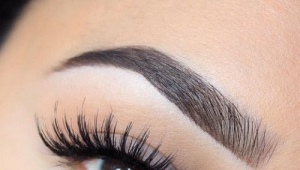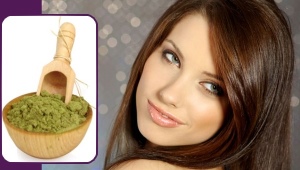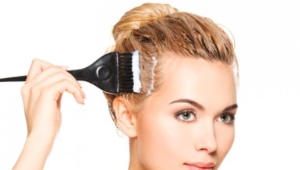Basma for hair

Among hair cosmetics, dyes never lose their relevance. The modern market is full of interesting synthetic compounds, but natural, time-tested paints are not inferior to their positions.
What it is?
Basma is a natural coloring greyish-green powder obtained from the leaves of the Indigofera shrub, which grows in countries with a tropical climate. As a dye, basma was well known in ancient times: initially it was widely used for making ink and dyeing fabrics in bright blue (indigo color).


Currently, basma is one of the most famous natural hair dyes. On the market of cosmetic products, there are always the most popular varieties of it: Iranian, Turkish, Yemeni. For many women, Indian basma (also known as black henna), which provides soft and lasting color, is a familiar cosmetic product.
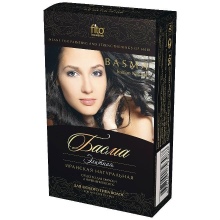

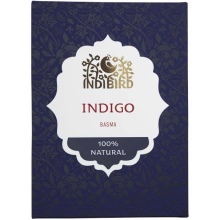
What are they made of?
Basma is an absolutely natural paint, saturated with biologically active substances and vitamins. Because of this, in addition to achieving a decorative effect, it has a healing effect on the skin - helps to maintain its natural acid balance, improves the condition and growth of hair. Basma contains various resins, wax, mineral ingredients, tannins and vitamin C, which strengthens hair.


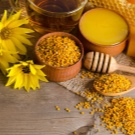



Benefit and harm
When choosing basma as a dye, you need to remember that dyeing hair with it requires not only certain knowledge, but also skills. Since this paint includes many active components in its composition, it can have not only beneficial, but also negative effects.
Compared to chemical dyes, the obvious advantages of this cosmetic product are due to its natural composition and, therefore, the safety of use. Being an environmentally friendly product, basma performs a number of therapeutic and cosmetic functions:
-
has an astringent effect;
-
works as an antimicrobial and anti-inflammatory agent;
-
heals wounds;
-
promotes the disappearance of dandruff;
-
strengthens roots and accelerates hair growth;
-
makes strands smooth, silky and shiny;
-
returns softness and elasticity to gray strands;
-
prevents cross-section and stops hair loss;
-
differs in antiallergenicity;
-
helps to increase the volume of hair.

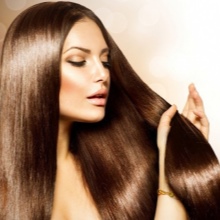
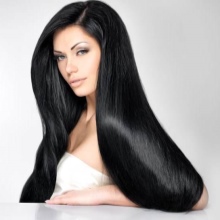
The disadvantages of basma usually include:
-
the complexity and duration of the staining procedure;
-
the lack of a 100% possibility of obtaining the planned color, even taking into account such natural properties as density, length, thickness, color, structure, as well as susceptibility to dyes;
-
dry hair with constant use;
-
the duration of the process of washing out the dye if it is necessary to use another agent;
-
the risk of obtaining a heterogeneous staining result;
-
limited use for blond hair;
-
difficulty in influencing hard, thick, elastic curls;
-
the difficulty of determining the optimally balanced composition of the dye to obtain the planned shade;
-
the need for regular tinting strands;
-
inability to use for previously dyed hair.
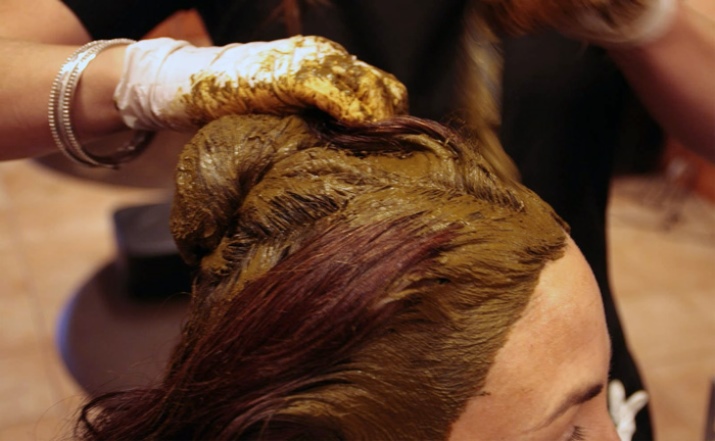
When using basma, it is necessary to take into account its properties: being a strong dye, it negatively affects the skin.
Colored spots on the skin, traces of its use, look unattractive and are washed off for a long time and difficult. Since you have to apply it with your hands, first of all, it is harmful to the hands, so staining should be done with gloves.
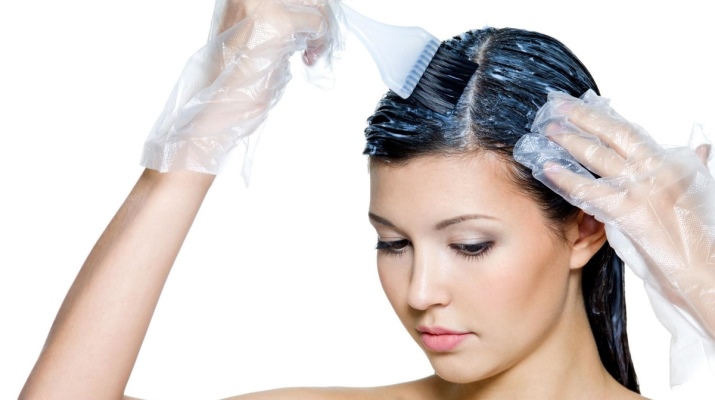
It has a negative effect not only on the hands, but also on those parts of the scalp and neck with which it directly interacts. To prevent this the scalp is pre-lubricated with cream or petroleum jelly, making sure that the oily product does not end up on the hair, since the oiled areas do not perceive the coloring matter. It will not be superfluous to protect the neck area with a napkin or cotton roll. To protect clothing, you can use any dense fabric or cape.
In how many days will it get dark?
After painting, women often worry about how soon the strands will darken. Saturation of hair with pigment takes place gradually: after washing off the dye, you will immediately see a new tone, which will change on average over 6 hours, becoming more and more concentrated. The complete completion of the dyeing process at the level of the hair structure requires about 3 days.

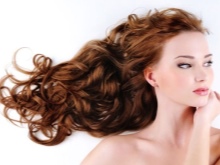

What color does it give?
Basma gives you the opportunity to experience a wide range of colors and shades - from the typical black dye to light brown. However, it is almost impossible to guarantee an absolutely accurate receipt of the planned shade, since along with the length, the result is affected by such natural hair data as their structure, thickness, stiffness, natural color and many other nuances.
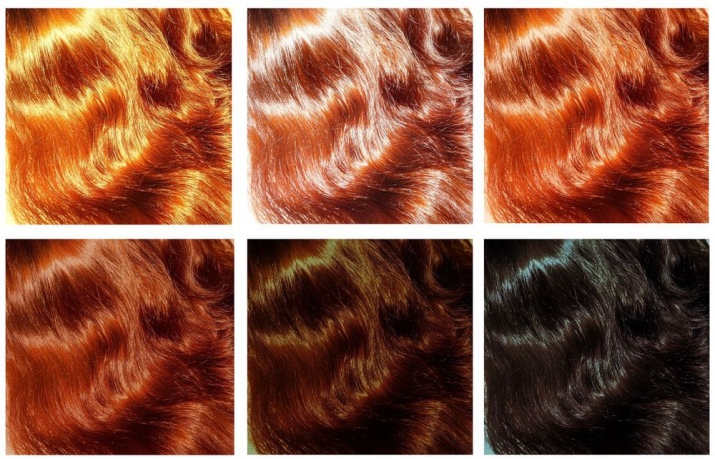
When choosing the desired shade for a hairstyle, first of all it is necessary to deal with the most commonly offered standard formulas for the ratio of basma and henna, since it is they who primarily determine the color differences.
So, to get a chestnut tone, basma and henna are taken in equal amounts. To give the curls a bronze tint, the amount of henna should exceed the amount of basma by 2 times. If your goal is to dye your hair pitch black, then you need to take basma 2-3 times more than henna.
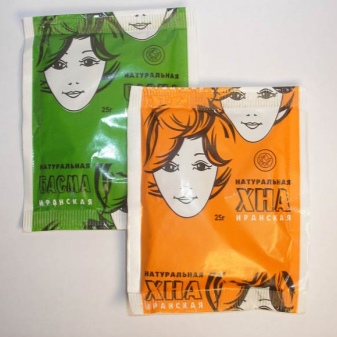
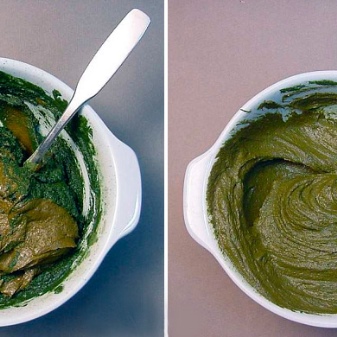
When working on the selected shade, the time parameters of the staining procedure should not be underestimated. This means that in the process of studying a particular recipe, it is necessary to pay attention not only to the proportion of the dye components, but also to the duration of its stay on the hair.

If you are ready to experiment with the dye, then you should take a closer look at the recipes that allow you to get quite rare shades.
For example, the stylish color of a black tulip (black with purple tints) is achieved by combining one part of henna with two parts of basma and adding two tablespoons of freshly squeezed beetroot juice to the resulting mixture. The composition should be kept on the strands for about an hour.
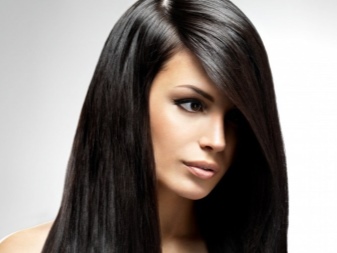
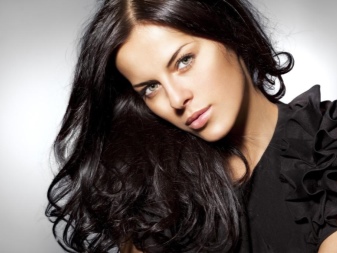
When dyeing hair in chocolate color, a mixture of basma and henna in a ratio of 2: 1 is used as a base, which is recommended to be kept on curls for no more than 2 hours. It should be borne in mind that chocolate coloring of light blond hair is a more laborious process, since the natural light tone requires two or three such procedures.
For those who are fond of searching for non-standard color solutions for hairstyles, experts suggest using additional natural ingredients in the form of decoctions more widely. For these purposes there are numerous recipes based on the use of medicinal herbs, flowers, tea and coffee.

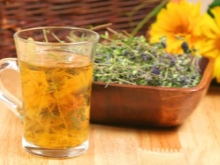

Can everyone use?
Basma is an absolutely safe product, its use does not have any restrictions related to the state of a woman's health. This paint can be used even during pregnancy, while breastfeeding.
At the same time, certain restrictions on the use of basma are imposed by the qualitative characteristics of a woman's hair. In this regard, it is important to remember that the method of working with this dye and the result obtained as a whole depends on 2 important properties of the hair: their health and color.

It is well known that the best result is achieved if the dye is applied to healthy hair. Coloring "tired" bleached and brittle strands usually leads to unpredictable results. In this case, there is a real danger of acquiring multi-colored strands: greenish, with a pink tint or blue.
As a basma dye, it has a fairly wide range of applications: it is effective when applied to dark and black, blond and red hair. However, it is not recommended to use it for dyeing blond hair.
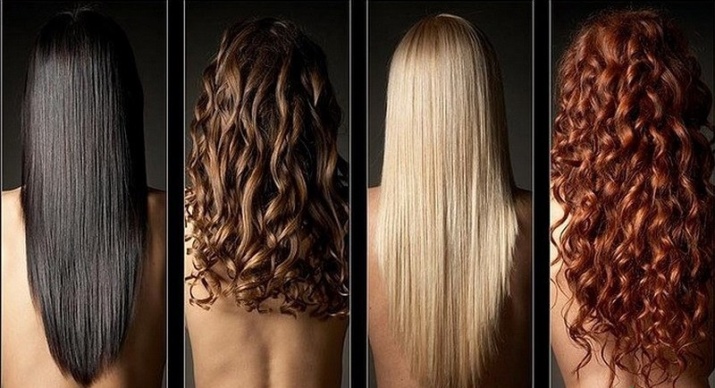
As a rule, basma guarantees color fastness for several months. However, under the influence of a number of factors, curls can acquire shades of reddish-violet, which is especially characteristic of dark hair. Therefore, brunettes are usually advised to maintain the desired tone with the help of timely tinting of the strands.



Basma is also effective for gray hair. It is important that it does not harm their structure.
Coloring gray hair with basma is carried out in stages. At the first stage, henna is applied to the strands, and at the second stage, after washing off the henna, they are covered with basma. Depending on the chosen color, each of the compositions must be kept on the hair for a certain time. For example, to obtain a shade of "sand blonde" you need no more than 2-3 minutes. To achieve the effect associated with a natural brown-haired woman, it takes half an hour, and to give the hairstyle a juicy chocolate color, three-quarters of an hour.
You will learn about the properties of basma and henna and their proportions in the mixture for hair coloring from the following video.
How often can you use?
Basma refers to potent dyes. As a result, it must be completely washed off from the hair if you decide to dye your hair with some other means, synthetic or natural. It's believed that it takes at least a month to restore hair after applying basma, and in some cases it may take longer. To destroy traces of the use of basma, decapitation helps a lot (i.e., gentle removal of color spots left after staining or an inappropriate shade).
If you are among the staunch fans of basma and are not going to give it up, pay more attention to the result of its effect on the hair. The fact is that the tannic acid composition of basma, under certain conditions, tends to cause overdrying of the hair. To prevent this, one of the oils must be added to the dye, for example, jojoba, almond or olive. However, even if all preventive rules are observed, cosmetologists do not recommend, especially in the case of light and thin hair, to use basma more often than once every 2-3 months.
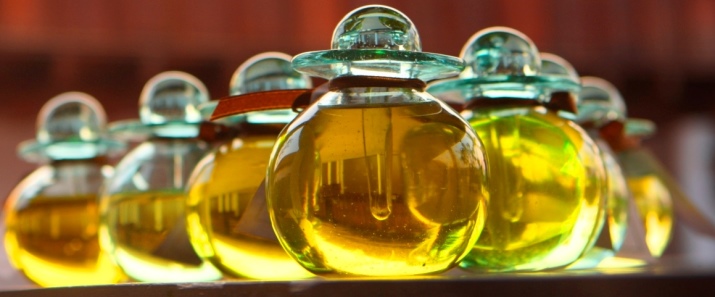
In general, the time mode of using this dye depends on a combination of factors - the individual properties of the hair, the quality of the product used and the technological literacy of the user.
How to breed?
Those who do not have experience with basma often ask how to brew basma correctly. You need to brew it together with henna, while you can use herbal decoctions. In order to properly breed basma, it is necessary to strictly follow the recommendations developed by professionals. The preparation of the composition requires that the powder be placed in a deep porcelain, ceramic or glass bowl and filled with boiled water (its temperature should approach 90 ° C).

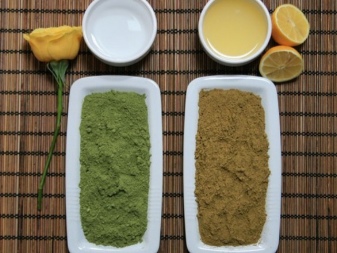
To stir the composition, it is imperative to prepare a wooden spoon, since a metal one cannot be used: when in contact with metal, chemical processes occur in the paint, leading to an unexpected change in hair color.
After bringing the paint to the state of thoroughly mixed thick sour cream, add a little glycerin, cosmetic oil or flaxseed decoction to it.This small technological subtlety will help reduce the risk of running off the composition applied to the hair, and will also facilitate the process of washing it off later.
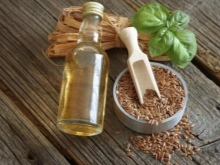


For long hair, it is better to apply a coloring composition of a more liquid consistency, which will help to avoid the appearance of poorly painted areas on the strands.
Hair should be prepared for the planned procedure in advance: they must be clean. Dye can cover both wet and dry strands. However, it must be remembered that basma is applied only hot, so it is more convenient and safer to do this with a brush.
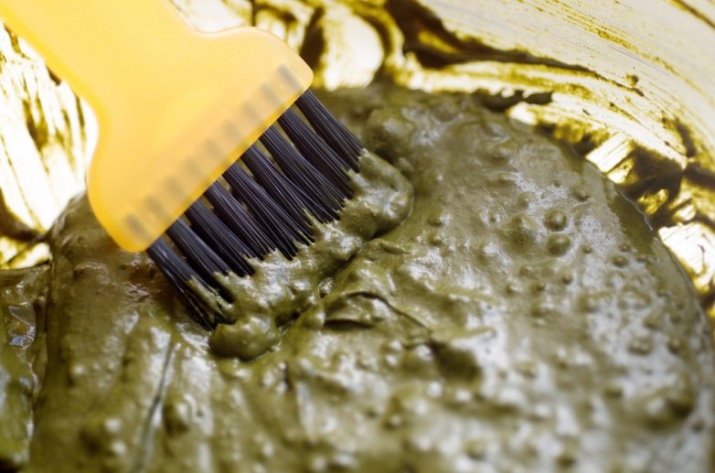
How to paint?
Basma hair coloring is a rather laborious process that requires compliance with strict rules, deviation from which leads to deep disappointment. The matter is complicated by the fact that any errors made are very difficult to eliminate.
Despite this, Basma retains its popularity, and painting with it is carried out not only in the salon, but also at home. At the same time, however, we must not forget that success is achieved only if the step-by-step instructions for using this dye are your indispensable companion at every stage of work.

The basic rule that determines the specifics of working with basma is that it cannot be used as an independent coloring agent: it gives a greenish tint to light strands, and bluish to dark curls. For this reason, it is always combined with some other dye, most often with henna.
Basma and henna can be applied simultaneously, in the same composition, but can also be used separately.
The preparation of a single mixture from these substances is usually preferable for many, since it helps to save time.In this case, these substances are diluted in one container in compliance with the selected proportion. The resulting mixture can be applied to both wet and dry hair. The paint is washed off without the use of shampoo.
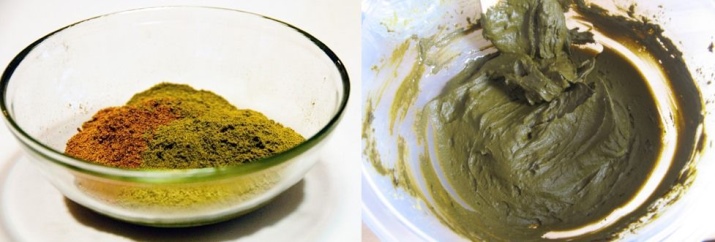
If you constantly do highlighting, then you should remember that after it you can’t use either basma or henna at all. This is due to the fact that the interaction of chemical and natural compositions always leads to unpredictable, but necessarily negative results.
Many basma lovers are interested in the question of whether there are any special rules for applying it. Cosmetologists say that the generally accepted way to cover hair with basma is quite simple: first you need to apply paint in the occipital area, then move to the crown of the head, and at the end - to the temples. The bangs are painted over last. After painting is completed, many cover their heads with warming agents. However, it is often noted that the use / non-use of heaters (polyethylene, towels or a warming cap) also affects the quality of dyed hair: the effect of shiny hair is achieved with the help of heaters, and the dull effect is achieved without them.
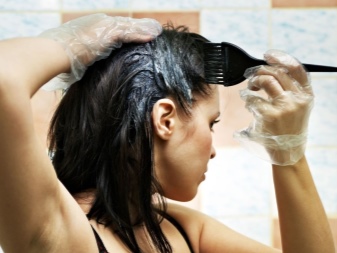

How to fix the result?
The quality of hair dyeing depends not only on their natural properties, but also on how correctly you managed to calculate the time required to fix the effect of the dye. To avoid mistakes when trying to achieve the desired color effect, it is safest to test one of them before dyeing the strands: in this case, you will be able to correctly calculate the time required to obtain the planned shade.
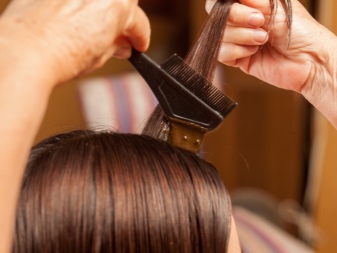
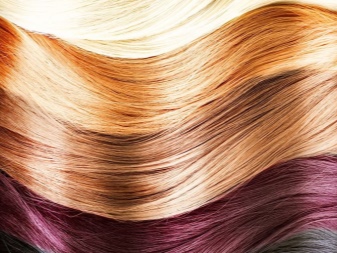
At the same time, when determining the time parameters of the action of Basma, one can rely on a very general rule, but reflecting a real trend.It comes down to this: the richer and darker the hair color, the thicker and stiffer they are, the longer the dye lasts.
When choosing a dye, it is important to remember that no matter how much you want to try all the possibilities of basma, it cannot be applied to dyed hair and permed hair.
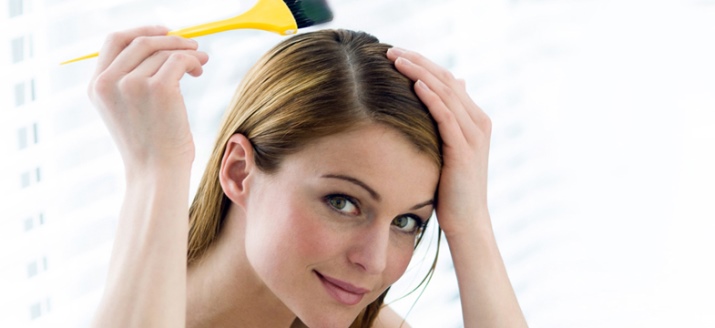
To fix the resulting color after dyeing the hair, they can not be washed using shampoo for another 3 days.
How to wash off hands?
Basma is a strong dye, so after staining, the question often arises of how to wash your hands. It is especially difficult to remove the paint from under the nails. As a rule, soap and shampoo help little. Those who have encountered this problem are advised to use regular toothpaste: it needs to rub the stained places for a long time, and then apply a balm on them.

How to remove from hair?
Basma solution is washed off with warm water for a long time, shampoo is not used. Sometimes, after washing off the composition, a shade in the form of green appears on the strands. Such a greenish color disappears a couple of days after the oxidation of basma.
If the staining result does not satisfy you, the dye can be removed by washing the hair with shampoo, and after that, lighten the strands with lemon juice, which must be washed off 10 minutes after using it.



At home women often try to wash off the paint with soda: according to the recipe, the juice of ½ lemon is added to the warm soda solution, and the resulting composition is kept on the hair for a quarter of an hour. This procedure lightens the hair by about 2 tones. However, it should be remembered that it is suitable for oily hair and is contraindicated for thin and dry hair.
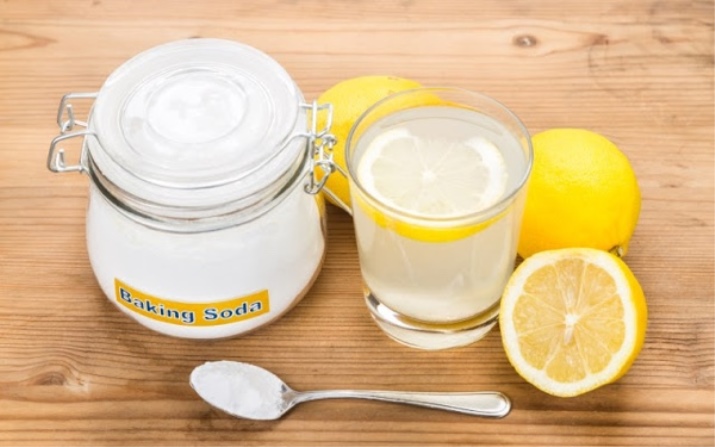
Reviews
Today, basma is sold both in cosmetic departments and in supermarkets.It is represented by a variety of popular brands, but each woman has to decide for herself which one is the best, since in this matter it is most reliable to rely on her personal experience.

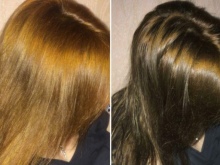

Despite the availability of a large number of synthetic dyes on sale, which differ in the widest color gamut and take into account the natural characteristics of the hair, basma is still one of the most popular dyes. Despite certain difficulties that arise when using it, many women prefer it because of its safe natural formula and the ability to organically combine with many medicinal decoctions.






















